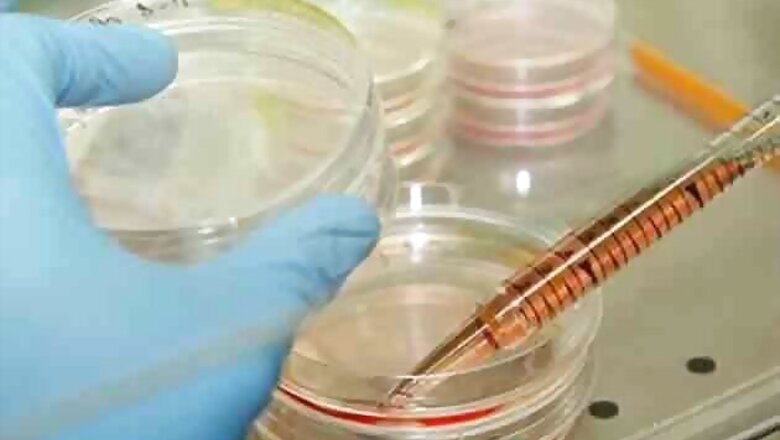
views
Washington: Scientists in Japan claim to have developed a rudimentary human liver and a precursor of a human eyeball in the lab using stem cells, a feat they say could be a boon for the future organ replacement.
At Yokohama City University in Japan, a team led by stem cell biologist Takanori Takebe grew a small, rudimentary liver using a recipe of just three types of cells.
The trick was figuring out when to introduce each element into the mix of cells: "It took over a year and hundreds of trials," LiveScience quoted Takebe as telling journal Nature. First, the team placed genetically reprogrammed human skin cells, called "induced pluripotent stem cells", on growth plates in a specially designed chemical bath. After nine days, the cells began developing into hepatocytes, or liver cells.
At that point, the researchers added cells taken from an umbilical cord, which would develop into the lining of blood vessels, and cells from bone marrow that can differentiate into bone, cartilage or fat.
Two days later, the cell assortment had self-organised to form a three-dimensional "liver bud" -- a 5mm-wide chunk of tissue that performed basic liver functions. When they grafted the liver bud into a mouse, the team said the tiny organ's blood vessels worked correctly and it successfully metabolised some drugs that human livers metabolise but which mouse livers normally cannot.
Takebe said a more developed version of the liver could eventually be used for long-term organ replacement, as well as serving as a short-term graft for patients whose damaged native livers are expected to recover.
Meanwhile, Yoshiki Sasai and colleagues at the RIKEN Center for Developmental Biology in Kobe, reported that they had managed to induce human stem cells called "retinal precursor cells" to develop into a central component of the human eye called an optic cup.
In a petri dish, the cells spontaneously bulged to form a bubble called an eye vesicle, which folded back on itself to create a half-millimeter-wide pouch layered with retinal cells the optic cup.
Most impressively, outside experts said, this process unfolded correctly without any external guidance by the team.
"The morphology is the truly extraordinary thing," said Austin Smith, director of the Centre for Stem Cell Research at the University of Cambridge in the UK.
In fact, the scientists didn't even know quite how optic cups developed until Sasai and his team watched it happen spontaneously in the lab. The achievement lends hope to the possibility of restoring vision in humans who have lost their sight, they said.
Masayo Takahashi, an ophthalmologist on Sasai's team, has already started transferring sheets of retina from lab-grown optic cups into blind mice in hopes of restoring their vision, and she plans to do the same with monkeys by the year end.
Both the works were presented at the annual meeting of the International Society for Stem Cell Research in Yokohama, Japan recently.
Although further progress is needed before fully functional lab-grown livers and eyes will be ready to implant into a human, experts said the new results constitute genuine advances in that direction and they have other medical uses in the meantime.



















Comments
0 comment